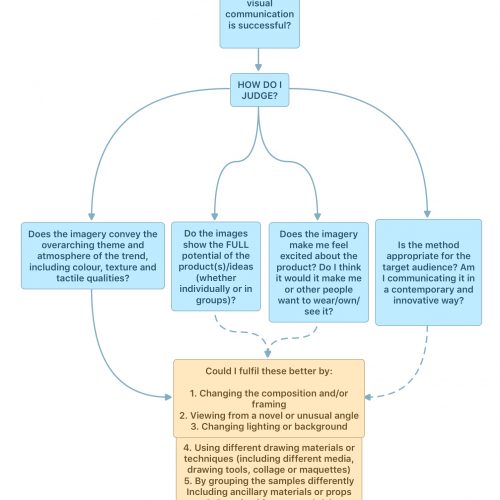
Critical thinking: Developing a model as an approach to problem-solving
I am a level 2 Textiles degree student and I have just completed Contemporary Context which is the first of the level 2 (HE 5) modules.
Setting out on the final assignment, I encountered a problem which I suspect is not unfamiliar: A lack of motivation and enthusiasm and a general feeling of not being sure where to start.
A few weeks before, I had completed an online critical thinking skills workshop with course leader Rebecca Fairley. Critical thinking and reflection are powerful tools which add validity and credibility to qualitative research, but they can be challenging to apply because there is no single ‘right way’ or set of prescriptive instructions which can be followed. Over time, I began to see that the challenge could be used to my advantage, because the tools are versatile and can be adapted and applied to many different situations.
During extended reading, I came across the suggestion that study and learning itself can be used as a subject for critical reflection (Cottrell, 2017). My final assignment asked for presentation and communication of fashion, interior and art textile concepts from earlier projects. Could critical reflection help me pinpoint why I felt stuck and help rekindle my enthusiasm?
I started by focusing on a simplified three-stage approach (Cottrell, 2017:201):
- “What” – Identify why it has happened and define the concern;
- “So what?” – Why is the concern important, and what needs to be done to understand it better;
- “Now what?” – Using the insights gained, how will things be done differently or better so as to address the concern.
I summarised these thoughts in figure 1., and because I also recognised that I would need to judge the effectiveness of my actions, I added a “review” box to close the loop.
Figure 1: Top level critical thinking model
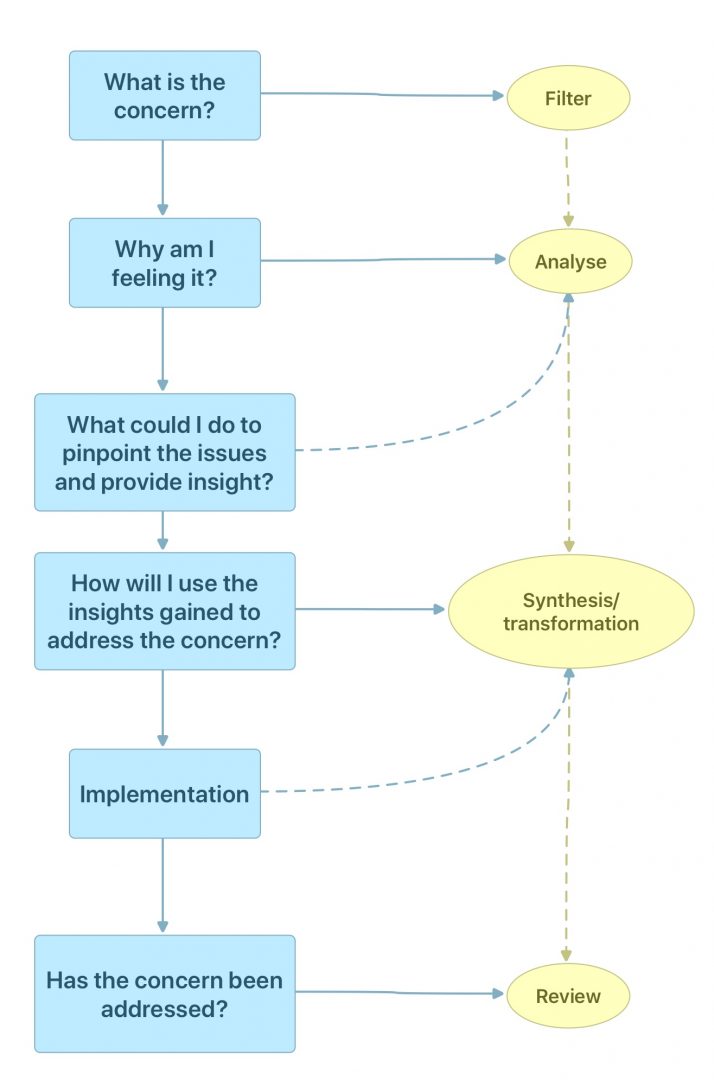
Next, I started to analyse and add detail to each of the stages. The result was figure 2:
Figure 2: Fleshing out the top level model
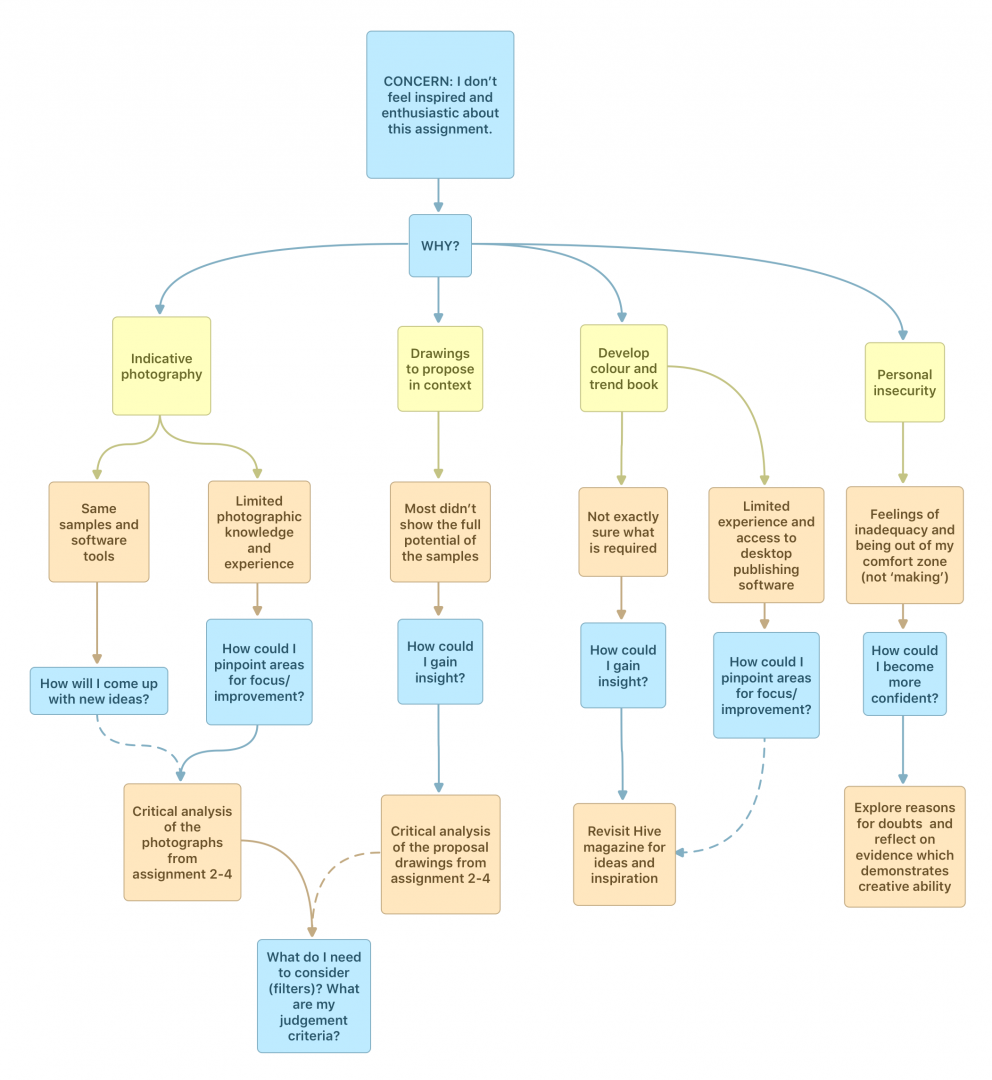
Populating the model gave clarity to my thinking, enabling me to articulate the concern (the “what”). It gave insight as to why the concern was important and how it might have arisen (the “so what?”). At this stage, however, the model is incomplete because it doesn’t define all the changes needed (the “now what?”), and how to judge whether they had been successful (review).
Drilling down further (figure 3) allowed me to tease out four attributes which would make the my visual communications successful and 7 ways in which transformation might be achieved. This part of the model is detailed, prescriptive and specific to the exercises assigned, providing a checklist for deciding actions and making judgements.
Figure 3: Defining success and judgement criteria
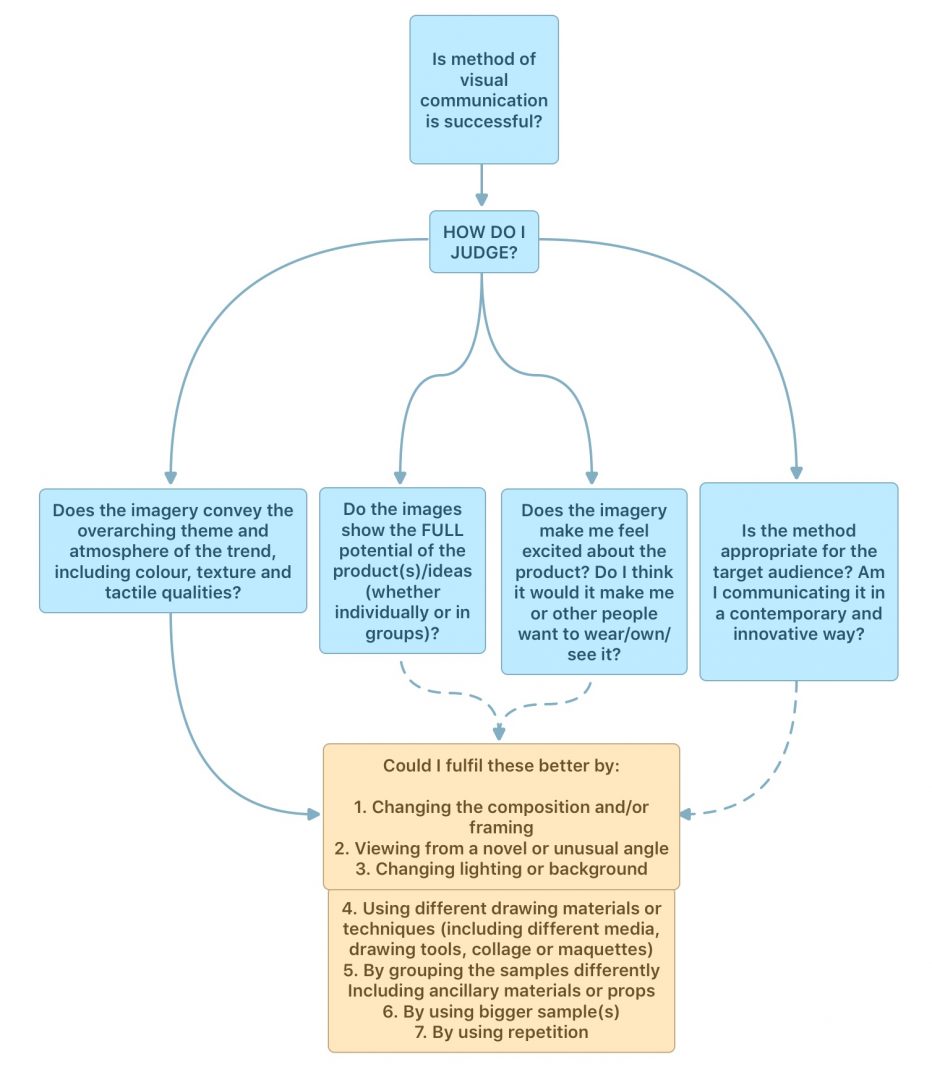
Referring to the model as I worked the assignment helped me produce a focused response with strong outcomes. To add credibility and confirm effectiveness, I also measured and compared the work against that produced for earlier assignments.
The act of creating the model shows tutors and assessors that I am taking an active role in my learning. It has highlighted subtleties and nuances which might otherwise have been overlooked and demonstrates that I am able to identify and justify my strengths and weaknesses. Most importantly, it provides evidence of my advancement as a self-reliant learner.
Further information about developing critical and reflective thinking skills with respect to the learning process can be found in the reference list below:
Gray, C. and Malins, J. (2017) Visualizing research: a guide to the research process in art and design. London and New York. Routledge.
Cottrell, S. (2017) ‘Chapter 12: Critical reflection’ In: Cottrell, S. Critical thinking skills. Effective analysis, argument and reflection. Macmillan study skills (3rd Ed) London. Red Globe Press. pp. 187-210
Johns, C (2009) Becoming a Reflective Practitioner. Somerset. John Wiley & Sons, Incorporated.
University of Reading (2019) Practice-based and reflective learning. At: https://libguides.reading.ac.uk/reflective/thinking (Accessed 25 September 2019)
|
|



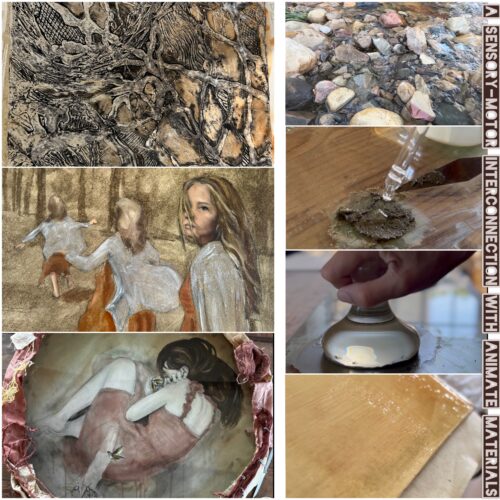



I love your thinking style Nicky. Thank you for sharing : )
Thank you for sharing this problem solving approach with all of us.
This is so helpful.
Thank you for sharing
I’ve been having similar feelings about an assignment and this looks to be a helpful, logical tool which is particularly good because it concentrates on actions. Thank your for sharing how you used the process.
Really good to see your own model of working, especially the consideration of the full potential of a sample, often I think I didn’t exploit this for this course.
Perhaps involving feedback from others would strengthen the model further as you consider tackling personal insecurities.
Thanks for sharing this. I’m a visual learner so seeing your tables etc was very useful.